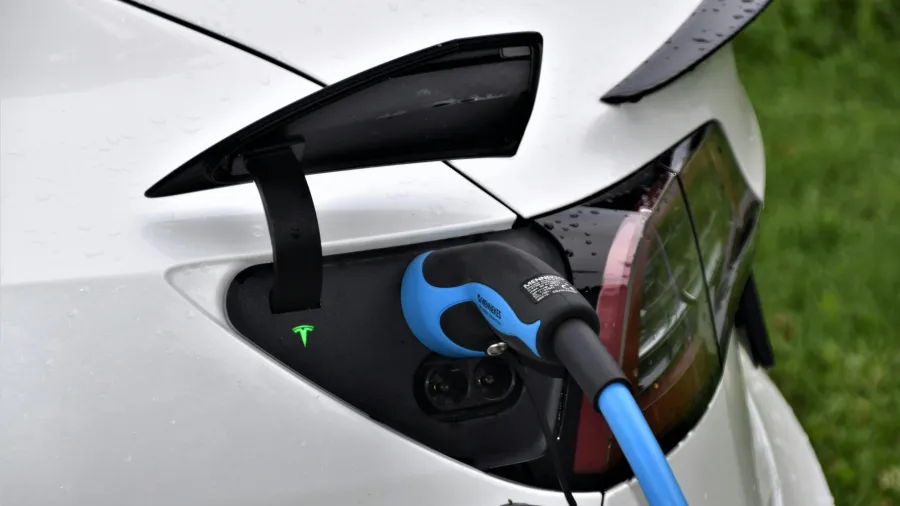
VOX POP: How can vehicle-to-grid technologies boost energy transition?
Vehicle-to-grid (V2G) technology is seen as a groundbreaking innovation towards the resilience of the power grid and the improvement of robust energy transition.
Asian Power got in contact with energy experts to elaborate on the full potential of vehicle-to-grid technologies.
With the prominence of electric vehicles and battery storage as measures of energy resilience, major figures in the sector comprehended the potential of V2G. However, they also agree with the need for an improved infrastructure to foster its widespread use.
Oliver Redrup
Associate Partner, Strategy and Transactions – Infrastructure Advisory
EY Corporate Advisors Pte. Ltd.
Vehicle-to-grid (V2G) technology enables electric vehicles (EVs) to function as additional power sources by harnessing the electricity stored in the vehicle’s battery. V2G technology allows for the bi-directional flow of energy, where EVs can discharge electricity back to the grid when needed, in addition to the dynamic charging of EVs for mobility. It is useful in helping the grid supply electricity, especially during peak demand.
The majority of renewable energy sources deployed in Asia are highly dependent on unpredictable weather conditions, making them an unstable and intermittent electricity source without the proper storage facilities. Hence, with V2G, we can manage renewable energy demand better and balance our energy system. The technology reduces the need to build standalone large-scale battery energy systems which require large capital investments. The same principles and benefits of V2G can also be replicated in vehicle-to-home (V2H) and vehicle-to-building (V2B) situations, reaping further benefits when it comes to energy transition.
The technology is still in the pilot stage and has not been commercialized, especially in Asia. There are several challenges to large-scale deployment including grid resilience and stability, interoperability, lack of charging infrastructure (including the technical capability for bi-directional flow of energy), and lack of awareness of consumers and building owners.
From the government perspective, most countries in Asia lack the regulatory infrastructure that supports V2G. Countries have been focusing on updating their regulations and safety systems to allow EV charging and the deployment of EV charging infrastructure. Only recently are they turning their attention to leveraging the EV infrastructure for V2G purposes. For example, last October, in Singapore, the Energy Market Authority (EMA) and Singapore Institute of Technology (SIT) awarded a grant to a consortium led by Strides to develop and test-bed V2G technology to provide grid services. This will be Singapore’s largest V2G testbed conducted to date with 15 commercial vans and 10 V2G-enabled EV chargers.
Preparing the current power grid for V2G technology calls for collaboration between multiple public sector agencies including energy, transport, and finance as well as the private sector. It will involve a combination of technical upgrades, regulatory adjustments, strategic planning, and investment from the private and public sectors to test and showcase the emerging technology and pilot it for large-scale deployment.
In addition to assessing how V2G can be incorporated into the current power grid, any new investments need to be ‘V2G ready’ to minimize the cost and technical complexity of future adoption of the technology.
Sharad Somani
Partner & Head – Infrastructure Advisory
Head of Infrastructure, Asia Pacific
Head of ESG
KPMG
There are three areas where vehicle-to-grid (V2G) implementations can contribute to energy transition. The first is demand-supply balancing. Vehicle-to-grid (V2G) implementations can help balance the demand and supply of electricity by providing energy back into the grid (storage for grid) during peak demand times. This balancing can help reduce the electricity supply by both coal and natural gas during peak hours by about 2.8% and 8.8%, respectively.
The second involves resilience during emergencies, where a V2G setup would have a high impact as a power source, as it is estimated that in the upcoming 20 years, 6% of the global electricity production could be stored in EV batteries, thus providing resilience to the grid.
Finally, the third is renewable energy management, which allows resilience during demands. V2G can store excess energy from renewable sources (solar or wind) during peak production times and feed back to the grid when needed. This increases utilisation of renewable energy plants and reduces curtailment. In addition, according to EMA, V2G technology can enhance the reliability of power grids by helping fill gaps in renewable energy generation that can be unpredictable.
Overall, V2G technology can contribute to energy transition by helping cleaner energy become effective and hence reducing reliance on fossil fuels.
One key benefit to be considered by EV owners and EV manufacturers is lower cost of EV batteries through returns from V2G schemes for EV owners. However, to realize this, business models need to evolve to support this. If V2G owners can take advantage of net-metering schemes used in solar/renewable power from homeowners, V2G would have a starting point. Hence, V2G could help reduce EV charging costs by 28 to 67% and help transportation move away from fossil fuels. In addition, the adoption of V2G by consumers can reduce the power generation cost and increase the power company’s revenue by approximately 3.65% as the peak power generator can be reduced.
However, the technology is still considered nascent, and so are the policies around them. Key issues to consider are in the areas of technology maturity, lack of interoperability, and unknown business models.
It is important to note that vehicle-to-grid (V2G) technology was originally conceived as vehicle-to-home, not vehicle-to-grid. In initial conceptual design and executions, this feature had been considered/implemented to give EV drivers the ability to charge another EV in cases of emergency.
This ability is now being extended to electric grids. Several key factors need to be considered as we explore V2G implementation: performance of battery chemistries in the V2G scenario, design of the EV batteries to suit V2G powering, wear on the vehicle's batteries - the potential reduction in capacity and hence loss of range in transportation, and a case for EV manufacturers to equip EVs with bidirectional power feature.
Some key factors to consider from the perspective of the electric grid include infrastructure investments and a consistent policy in supporting business models.
V2G will require investments on the grid side to accommodate bi-directional power flow and metering schemes to account for the bi-directional power flow. These investments would also need to consider investments in communications and related infrastructure for V2G to be realized.
Given the investments and the need for complex collaboration from multiple stakeholder groups (utilities, distributors, end-users, EV manufacturers, and others), market regulators would need to institute clear and consistent policies for V2G to gain traction and evolve. There will be a learning curve for V2G and the costs during this learning curve might need to be defrayed by regulators and Government authorities for the private sector to invest in and promote V2G.
The current power grid is moving towards investments to accommodate EV charging requirements projected for the uptake of EVs. This is an opportune moment to consider V2G, formulate a long-term policy, and couple investments for EV charging loads with V2G capabilities.
However, this is easier said than done due to various reasons: EVs and their capabilities are evolving, battery chemistries are evolving, and markets are considering a portfolio approach to both energy (energy portfolio could include green power sources, cross-border grids, and, where possible, nuclear power) and transportation (transportation portfolio could include EVs, traditional/fossil fuels, and hydrogen) – policies and markets in this context are evolving.
Given these factors, the important preparation policymakers should make is to provide a long-term view of V2G’s importance and direction in each market. There have been success stories in the Netherlands and Germany. These could be case studies that can be built upon to realize V2G.



















 Advertise
Advertise






